Understanding the Core Elements of Engagement Rings
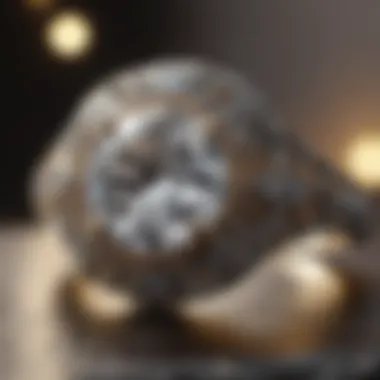
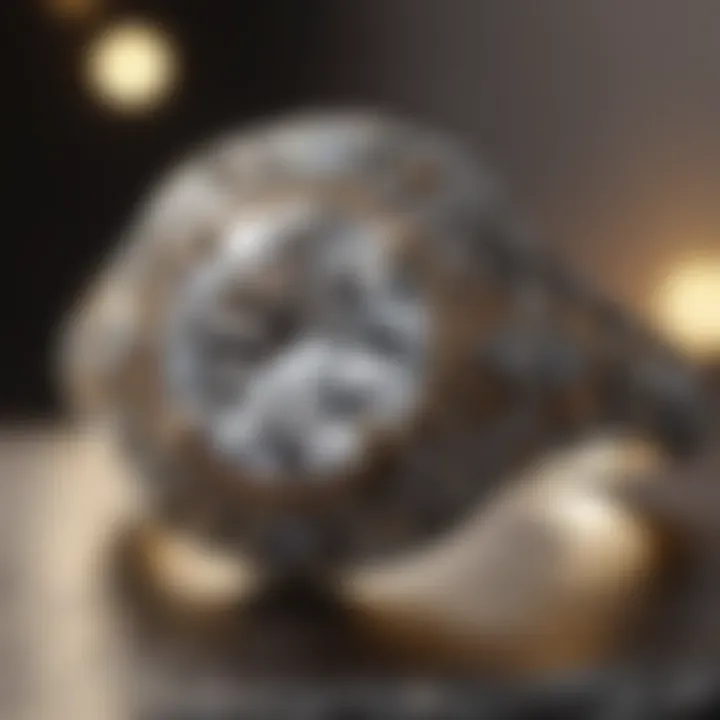
Intro
When it comes to engagement rings, the implications go beyond mere aesthetics. Each ring serves as a powerful testament of love, commitment, and social significance. It is this very essence of engagement rings that mirrors the emotional tapestry binding two individuals in a promise of partnership. You could say that it's not just a piece of jewelry; it's a piece of life shared and a story yet to unfold.
The historical and cultural nuances behind the gemstones and designs that adorn these rings are just as impactful as the relationships they symbolize. In this exploration, we delve into the core elements that define engagement rings, granting a fresh perspective on their roles in modern society.
Gemstone Overview
Definition of Gemstones
Gemstones, often regarded as nature's art forms, are minerals that have been cut and polished to enhance their beauty. They vary in color, clarity, and composition, giving them a distinctive character. At their core, gemstones are defined by two major attributes: their rarity and their visual appeal. Unlike common stones, gemstones are often scarce, making them precious and desirable.
Classification of Gemstones
Gemstones can generally be classified into two specific categories: precious and semi-precious. The distinction isn’t just based on beauty; it's about cultural perception and historical rarity.
- Precious Gemstones: These are the glittering stars of the gemstone realm. Diamonds, sapphires, rubies, and emeralds fall under this bracket. They carry rich histories and are often associated with wealth and grandeur.
- Semi-Precious Gemstones: This group includes a wider variety of stones such as amethyst, peridot, and turquoise. Although they may not share the elite status of precious gemstones, they offer unique charm and character.
"Every gemstone tells a story; it carries with it memories of its formation deep within the earth, a history of its journey, and a promise of the future it holds in an engagement ring."
Historical Significance
Origins of Gemstone Use
The trend of incorporating gemstones into engagement rings dates back centuries, with origins rooted deep in ancient civilizations. In history, gemstones were believed to hold mystical properties that could promote love, fidelity, and prosperity. Ancient Egyptians, for instance, associated certain stones with the divine, often using turquoise and lapis lazuli as symbols of love and protection.
Cultural Insights: Gemstones in Ancient Civilizations
Across various cultures, gemstones have occupied pivotal roles. In Rome, rings adorned with emeralds and sapphires were signs of high status and wealth. Meanwhile, in Indian tradition, the engagement ring known as 'mangalsutra' is often embellished with black beads and gold, representing both protection and connection.
The gemstones chosen for each ring reflect the values and beliefs of the society offering them, infusing each piece with substantial cultural significance. Further, the symbolic meanings evolve as gemstones become personal tokens within romantic narratives.
Through an exploration of the jewels that grace engagement rings, we glimpse the fusion of artwork and emotion, history, and storytelling. As we continue this journey, we'll uncover how these elements blend into a narrative that celebrates love in its myriad forms.
Foreword to Engagement Rings
Engagement rings have long held a place of importance in the tapestry of human relationships. These rings aren’t just pieces of jewelry; they embody commitment, affection, and the promise of a future together. They communicate a myriad of emotions and intentions, bridging personal sentiments with wider social norms. In this article, we set out to explore not only the intricate details that define engagement rings but the cultural and historical layers that enrich their significance.
Understanding engagement rings is essential for various audiences—be it gemstone enthusiasts looking to refine their collection, collectors seeking historical context, or jewelry designers wanting to create pieces with deeper meaning. Each ring presents a story that extends beyond a mere adornment, prompting an exploration of personal values, societal influences, and artistry. Consequently, this makes engagement rings a fertile ground for discussion.
Defining an Engagement Ring
An engagement ring traditionally signifies a promise of marriage. It's often characterized by its distinctive features—most notably, the center stone, which amplifies its significance. This unique characteristic calls for a closer look at the symbolism behind the choice of stone and the overall design aesthetics of the ring itself.
When defining an engagement ring, it’s useful to note that this piece of jewelry often varies significantly across different cultures. While some cultures lean heavily on diamond rings, others might favor alternative gemstones. In some instances, it’s not the material that matters, but rather the story behind the ring, the wearer’s personal touch, and the memories encapsulated within it.
Historical Significance
The history of engagement rings stretches back centuries, reflecting shifts in societal norms and values. The early engagement rings dated back to the Romans, who were among the first to incorporate metal bands as a token of commitment—symbolizing not only love but also ownership. The use of iron signifies strength, durability, and a forever bond, qualities that rings continue to symbolize today.
Over time, these rings evolved. The introduction of diamond rings can be traced back to the 15th century, when Archduke Maximillian of Austria gifted a diamond ring to Mary of Burgundy in 1477, marking the dawn of diamond engagement rings as we know them. This significant moment in history brought diamonds to the forefront, and ever since, they have been synonymous with love and commitment in Western cultures.
"The engagement ring, a simple circle of metal and stone, encapsulates centuries of tradition and societal evolution."
With each passing generation, the narrative only deepens. Symbols and styles shift—what was once popular changes. Today, the surge in ethical sourcing has given birth to unique alternatives like lab-grown diamonds and vintage gems, opening new avenues for self-expression among couples.
Cultural Perspectives
Exploring the cultural perspectives surrounding engagement rings offers valuable insights into human relationships and social norms. Engagement rings are not just pieces of jewelry; they embody the expectations, traditions, and emotional narratives of societies worldwide. Each culture brings its unique touch to the significance and representation of engagement rings, enriching the tapestry of love and commitment.
Global Traditions
Around the globe, the customs related to engagement rings vary widely, often steeped in history and laden with meaning. In many Western cultures, a diamond engagement ring is standard; this tradition was popularized in the 20th century through clever marketing. The diamond is seen not merely as a gem but as a symbol of enduring love and strength—a notion that can be traced back to ancient beliefs about the stone's properties.
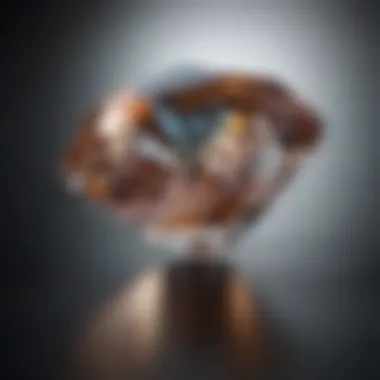
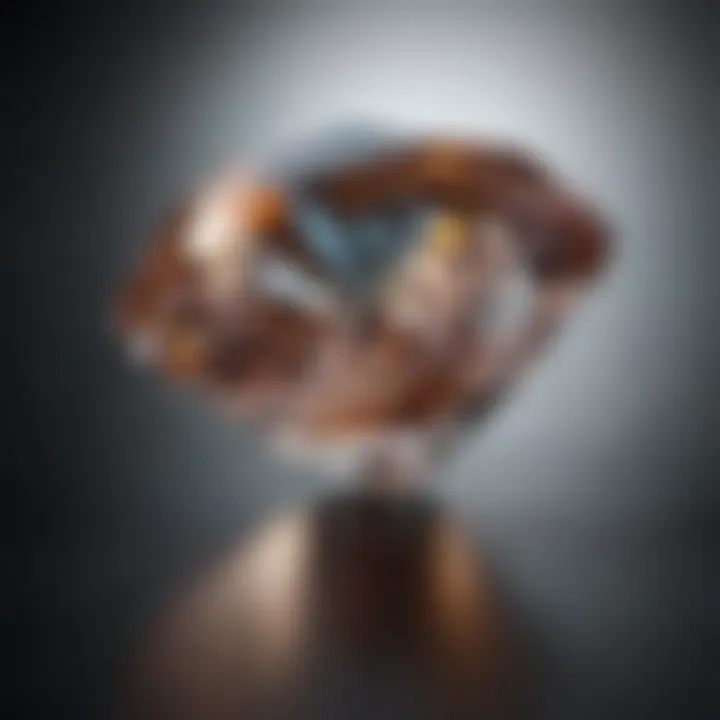
In contrast, places such as India have their own deep-rooted customs. Here, gold rings are traditionally favored, often adorned with intricate designs and symbols that reflect the couple's heritage. Some Indian families consider the engagement ceremony so significant that rings are exchanged during ritualistic weddings known as 'Sangeet'. The families’ involvement in choosing these rings emphasizes the communal aspect often attributed to romantic unions.
"An engagement ring is not just a token of love; it’s a reflection of the culture from which it stems."
In Scandinavian traditions, both partners may wear rings, showcasing a sense of equality in commitment. Further south, in parts of Africa, unique materials like beaded rings or fabric bands symbolize engagement, intertwining love with local craftsmanship. These varied symbols impart a sense of identity and belonging, emphasizing that the essence of an engagement, like the rings themselves, is not one-size-fits-all.
Modern Departure from Traditions
Contemporary attitudes towards engagement rings can be a curious mix of traditional values and modern expressions. More couples today are favoring personalized and custom designs, choosing to depart from the conventional diamond ring. This shift may reflect a growing desire for individuality. For example, some couples might opt for alternative gemstones—like sapphires or emeralds—emphasizing personal taste over societal expectations. The rise of lab-grown diamonds has also gained traction, appealing to those who value ethical sourcing and environmental considerations.
Buzz around unique materials, such as wood or recycled metals, has made waves in the jewelry world as well. The notion of creating a ring that tells a story—whether through the material used or the design chosen—illustrates a significant departure from rigid traditions.
Moreover, the role of social media platforms like Facebook and Reddit has influenced how engagement rings are perceived. Couples share their journeys, fostering a mix of ideation and inspiration. The burgeoning trends of "non-traditional" engagements further signal a shift towards inclusivity, deconstructing well-established conventions about what an engagement ring should represent.
As society evolves, so does the meaning behind engagement rings. Future generations may continue to challenge norms, breaking away from what has traditionally been expected. But in every evolution there remains a common thread: engagement rings will continue to signify commitment, love, and a unique story shared between partners.
Key Components of Engagement Rings
When one talks about engagement rings, it's easy to get lost in the glimmer of gemstones or the intricate patterns of the settings. However, the essence of these rings transcends mere aesthetics. In fact, the importance of understanding the key components of engagement rings lies in their role as symbols of commitment, love, and individuality. Each element, from the band to the center stone, reflects the wearer's personal story and choice. By dissecting these components, we gain insight into the craftsmanship and sentimental value that each ring holds.
The Band
Material Choices
One of the primary decisions when considering an engagement ring is the choice of material for the band. Gold, platinum, and even silver are common choices, each providing a distinct character to the ring. For instance, platinum is known for its durability and premium feel, making it a sound choice for those looking to make a long-lasting statement. Meanwhile, gold, with its natural sheen, offers a classic elegance that has stood the test of time.
Another detail worth noting is the color of the gold. White, yellow, and rose gold each bring their unique flair. White gold, for example, resonates well with modern aesthetics, complementing the sparkle of diamonds. On the other side, rose gold has gained popularity for its romantic undertones, evoking warmth and affection. No matter the choice, the material plays a vital role in expressing personal style and preference, thus enhancing the overall message of the ring.
Width and Style
Next, we can’t overlook the width and style of the band. A thicker band can suggest a bold and confident approach to commitment, while a slimmer band might convey a more delicate or minimalist sensibility. The style can also vary significantly; from classic solitaires to more intricate vintage designs, each option reflects not only personal taste but also the overarching narrative the couple wishes to convey.
An interesting consideration is how a band’s width interacts with the individual’s hand. Wider bands might be more comfortable for those with larger fingers, ensuring that the ring is both beautiful and practical. The combination of width and style ultimately culminates in a harmonious design that resonates with the wearer’s journey.
The Setting
Types of Settings
The type of setting is another crucial aspect, greatly influencing the overall aesthetic and practicality of the ring. Popular choices include prong, bezel, and pave settings. A prong setting, which raises the stone above the band, allows maximum light to enter, showcasing the gemstone's brilliance. Alternatively, a bezel setting encircles the stone, providing a sleek and contemporary look that also offers additional protection.
Settings like pave add a burst of sparkle by embedding smaller stones across the band. This type not only elevates the ring's visual appeal but also allows for a remarkable way of showcasing intricate design work. Each setting choice carries its own benefits and drawbacks, which are essential to consider in the framing of the engagement ring’s narrative.
Functional and Aesthetic Aspects
The functional aspects of the setting can’t be disregarded either. It's not merely about aesthetics; a well-chosen setting also ensures the stone's security and durability. Decisions about how the ring will be worn in daily life should inform the choice of setting, as certain designs may be more prone to damage or snagging.
Additionally, a ring’s setting can play psychological roles; a more secure setting can instill confidence in the wearer, knowing their beloved gem is safe. Choosing a setting marries function and beauty in an essential way, capturing the essence of the engagement ring itself.
The Center Stone
Types of Stones
The center stone is arguably the most significant component of any engagement ring. Traditionally, diamonds have ruled the landscape, but the increasing acceptance of alternative gemstones—like sapphires and emeralds—has broadened horizons for couples. Each type of stone brings its own meaning and energy, allowing for a truly personalized choice.
Sapphires are considered symbols of wisdom and nobility, while emeralds evoke love and rebirth. As such, a couple might choose a stone that resonates with their values or story, making the engagement ring even more meaningful. Each stone has its unique characteristics that may captivate the wearer and perfectly reflect their bond.
Gemstone Quality and Cut
When selecting a stone, its quality and cut are crucial. Cut determines how well a gem reflects light, affecting its brilliance and overall appearance. A well-cut diamond, for example, often looks larger and more luminous than one of the same carat weight with a poor cut.
Quality also encompasses clarity and color. A high-quality gemstone can truly elevate a ring, greatly impacting its allure. Clarity refers to the presence of imperfections, while color can significantly alter the beauty of colored gems. These factors converge when determining a stone’s worth and ought to be closely analyzed to ensure the final piece resonates with the couple's vision.
The Role of Gemstones
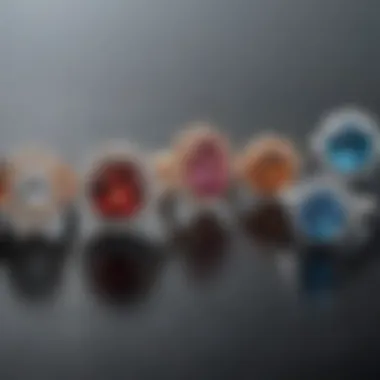
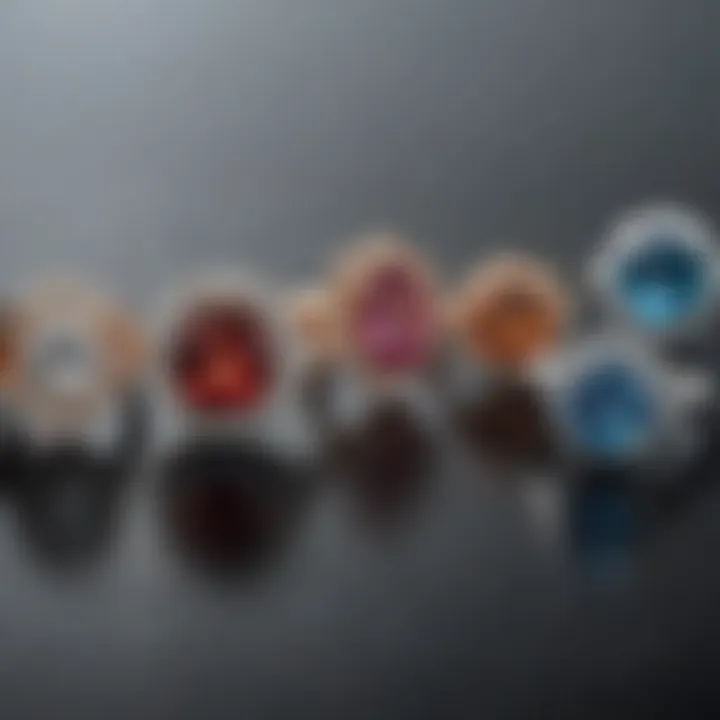
Gemstones hold a significant role in the realm of engagement rings. They are not merely decorative elements; their impact resonates on emotional, cultural, and symbolic levels. The choice of a gemstone is often informed by personal stories, beliefs, and values. For many couples, the gemstones they choose serve as tangible markers of their unique bond, encapsulating the essence of their commitment.
A diamond has long been viewed as the quintessential gemstone for engagement rings. Yet, the rise of alternatives has shifted the focus toward other meaningful stones, leading to a deeper exploration of what these gems represent in the context of love and partnership. Thus, understanding the emotional qualities and the symbolism behind each gemstone becomes crucial as these choices influence perceptions and relationships.
"The beauty of a gemstone goes beyond its physical attributes; it embodies the hopes, dreams, and promises shared between partners."
Symbolism of Precious Stones
Meaning Behind Different Gemstones
The meaning of different gemstones is a rich topic, as various stones carry historical and cultural tales that add depth to the choice of an engagement ring. For instance, sapphires, often associated with wisdom and nobility, can evoke a sense of trust and commitment. Meanwhile, rubies symbolize passion and love, which can resonate with couples wanting to express their ardor.
The key characteristic of gemstones is their ability to convey personal feelings that words often struggle to express. This characteristic makes them beneficial choices in an engagement ring. Some couples may even prefer to choose a stone that relates to a shared experience or personal meaning, lending even more significance to their choice.
Special features of gemstones often include their rarity and vibrancy, which can enhance their allure. For instance, luscious green emeralds remind many of growth and renewal, making them symbolic choices for new beginnings like marriage. However, potential drawbacks may include higher costs for rarer gems or vulnerabilities in specific stones, like opals being sensitive to temperature changes.
Birthstones and Their Significance
In addition to traditional gem choices, birthstones often provide a personalized twist on engagement ring selections. Birthstones not only signify the month of one partner's birth but also have distinct meanings associated with each month. For instance, aquamarine is related to March and is known for its calming properties, suggesting peace in the relationship.
A key characteristic of birthstones is their intimate connection to personal identity. For couples, choosing a birthstone can also signify a commitment that honors the very essence of their lives. Unique features, such as being born in the same month, can enhance this bond, while allowing a personal touch to the engagement ring.
However, a consideration with birthstones could be the traditional preferences that some couples hold towards more popular stones like diamonds or sapphires, which may overshadow the more individualized options.
Effects of Rising Gemstone Trends
The trends that are currently shaping the landscape of gemstones for engagement rings are particularly exciting. With a growing emphasis on sustainability and ethical sourcing, there's been a noticeable shift toward lab-grown diamonds and alternative gemstones. People are becoming increasingly aware of the environmental implications and the social issues tied to traditional mining practices. Hence, these rising trends reflect a more conscientious approach to choosing gemstones for engagement rings.
Additionally, colored gemstones are making their mark in contemporary designs. The movement towards unique and vibrant stones serves to express individuality and a departure from conventional aesthetics. This shift not only broadens choices for couples but also enriches the rituals surrounding engagement and commitment.
Emotional and Psychological Dimensions
Engagement rings are not merely jewelry; they embody profound emotions and symbolize deep commitments between partners. The essence of engagement rings transcends their physical attributes, diving into the emotional and psychological realms. This section elucidates the significance of emotional attachment to these symbols of love, exploring how they affect both individuals and relationships.
Commitment and Symbolism
An engagement ring serves as a powerful emblem of commitment. It is a promise that signifies the intent to share a future together. The choice of design and stone further amplifies this commitment's meaning. For many, wearing an engagement ring is akin to wearing a piece of one’s heart, visibly signifying dedication to a partner.
- Cultural Significance: Different cultures ascribe varied meanings to engagement rings, but at their core, they all resonate with the theme of everlasting love. From the diamond-studded rings of Western traditions to simpler bands in other cultures, the essence remains—a public declaration of fidelity.
- Personal Means: Each ring can be infused with personal meaning, like a unique design or a specific gemstone that holds significance for the couple. For instance, a sapphire might symbolize wisdom and nobility, or an emerald could represent growth and harmony; these choices allow couples to articulate their feelings in a personal way.
"A ring is not just a piece of gold or diamond; it is a conversation starter, a witness to shared desires and dreams."
Psychological Value of an Engagement Ring
The psychological implications of an engagement ring are equally noteworthy. For many, it serves as a tangible representation of their relationship’s growth and future possibilities.
- Sense of Security: Wearing an engagement ring often instills a sense of security and belonging. It marks a pivotal transition in a relationship, assuring partners of their bond's strength. This wearable reminder nurtures both confidence and stability, fostering a healthy emotional environment for the individuals involved.
- Status Symbol: On another level, engagement rings can also serve as a status symbol in social contexts, reflecting personal values, financial security, and social standing. It opens discussions about expectations and cultural norms surrounding engagements.
Practical Considerations
When selecting an engagement ring, a variety of practical considerations come into play, making the difference between an average purchase and a meaningful investment. These factors significantly influence decision-making and lend insight into the ring’s symbolism. The journey involves understanding not just the aesthetics and emotional weight, but also the practical nitty-gritty that accompanies such a purchasing milestone. A well-rounded comprehension of these essentials helps create a more satisfying experience that echoes commitment and foresight.
Budgeting for an Engagement Ring
Budgeting is arguably one of the most vital steps in acquiring an engagement ring. It sets a boundary and serves as a guiding light throughout the buying process. Many look to the three-month salary guideline as a benchmark; however, this may not resonate with everyone’s financial situation. Crafting a personal budget allows for flexibility, ensuring that the selection meets both emotional intentions and financial reality. It's essential to account for all costs involved, including taxes, potential insurance, and any extras like engraving or special packaging.
Some of the benefits of having a clear budget include:
- Prevention of overspending: Having a set limit decreases the likelihood of emotional decision-making in the heat of the moment.
- Focused options: A defined price range helps narrow down choices without overwhelming options.
- Shows thoughtfulness: Investing time in budgeting reflects genuine care for both partners’ financial futures.
Choosing the Perfect Ring
Choosing the right engagement ring is a highly personal experience and many aspects factor into this process. To ensure that the final selection accurately represents the bond shared, considering both personal preferences and expert advice can be invaluable.
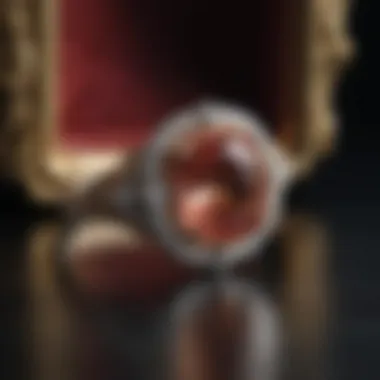
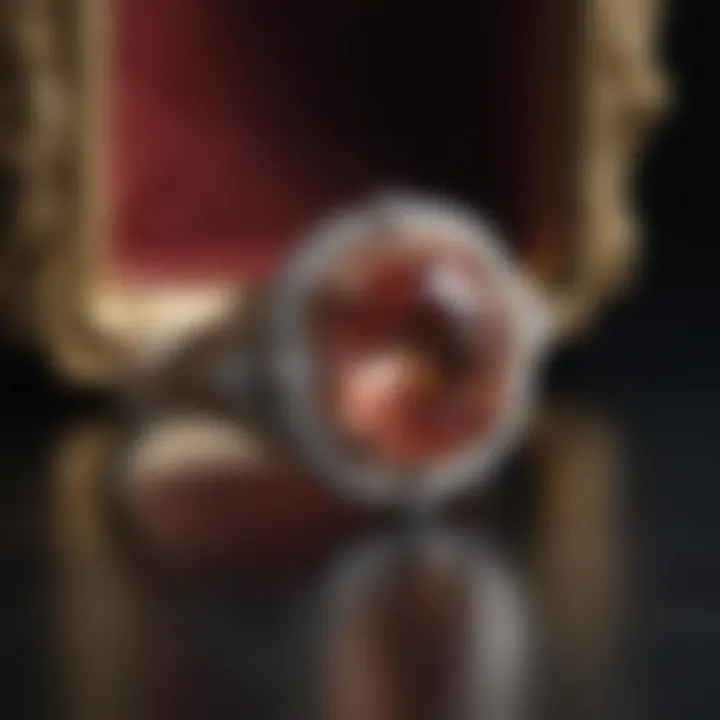
Personal Preferences
Personal preferences play a critical role in this selection process. They inform the style, design, and even material of the ring in a way that resonates deeply with the wearer. Understanding what truly matters to the individual can guide the journey towards a meaningful token of commitment. For example, if the wearer has an affinity for vintage pieces, selecting a ring that channels a retro aesthetic might feel more authentic.
The key characteristic of personal preferences is that they create a unique reflection of the wearer’s personality and taste. This consideration leads to choices that resonate on a much deeper level. They are not merely about adhering to trends, but about finding something distinctive. This makes for a more personal purchase, as traditions shift and trends undergo change.
Advantages include:
- Creates personal connection: When the engagement ring reflects individual style, it strengthens the emotional value.
- Explores creativity: Engagement rings don’t have to fit conventional molds—unconventional choices can add a significant layer of meaning.
Consulting with Experts
Consulting with experts can provide vital insights into the intricate world of engagement rings. Jewelers possess invaluable information ranging from current trends to stone quality. By leveraging this expertise, purchasers can avoid common pitfalls and enhance their choices.
An expert possesses a wealth of knowledge about materials and market fluctuations, making their advice a cornerstone of smart buying. Besides, their guidance aids in validating the quality of the chosen ring.
Some notable advantages of consulting with experts include:
- Ensures informed decisions: Engaging with knowledgeable professionals helps buyers make sound judgments without the overwhelming burden of researching every decision.
- Quality assurance: Experts can spot fakes or inferior craftsmanship, ensuring the piece comprises ethical and high-quality materials.
Ultimately, balancing personal preference with expert advice cultivates an appreciation that goes beyond the visual—a profound understanding intertwined with individual narratives and relational values.
"An engagement ring isn’t merely a piece of jewelry; it’s a milestone, a promise woven into its very design."
Future Trends in Engagement Rings
Importance of Future Trends in Engagement Rings
Understanding the future trends in engagement rings offers invaluable insights into the evolving nature of love, commitment, and personal expression. As society transforms, so too do the expectations and desires surrounding symbols of affection. Insight into these trends not only helps buyers make informed decisions but also gives designers the ability to tap into the cultural zeitgeist.
The importance of examining the future trends in engagement rings revolves around certain key elements:
- Design Evolution: Rings today are not just about aesthetics, but also about meaning.
- Material Sustainability: As environmental awareness rises, the demand for eco-friendly options grows.
- Personalization: More couples seek unique pieces that reflect their individual stories and tastes.
The adoption of contemporary trends can also confer multiple benefits. These include enhanced emotional value, showcasing personal ethics, and gaining a better return on investment through familiarity with market demands. Keeping abreast of these trends can enhance respect for the jewelry and the sentiments behind them.
Innovations in Design and Materials
Design and material innovation is, without a doubt, at the forefront of engagement ring trends. New technology in jewelry design has enabled both mass customization and intricate detailing previously unattainable.
- 3D Printing: This method allows for greater precision and creativity. Jewelers can experiment with structures that create captivating visual effects, pushing boundaries further than traditional methods ever could.
- Alternative Materials: Beyond classic gold or platinum, unconventional materials like titanium and tungsten are gaining traction, especially among younger couples who desire distinct styles.
- Hybrid Designs: Engagement rings are merging vintage allure with modern sensibilities. Merging classic settings with contemporary stones can yield a refreshing aesthetic that tells a story of combined tradition and innovation.
It’s not only about the stones anymore. The very bands and settings are transforming, providing a canvas for imagination and expressing individuality. Each piece seems to tell its own tale.
The Rising Popularity of Lab-Grown Diamonds
Lab-grown diamonds have surged in popularity over recent years and show no signs of slowing down. These stones offer many advantages, making them particularly enticing for today’s couples.
- Ethical Assurance: The ethical implications of mining natural diamonds have long been debated. Lab-grown alternatives eliminate concerns over conflict diamonds, providing a clear conscience in what can sometimes be a murky world.
- Cost Efficiency: Typically, lab-grown diamonds can be 20% to 40% less expensive than their natural counterparts. This economic benefit can allow couples to allocate funds for other important aspects of their lives instead of prioritizing a high-priced diamond.
- Customizability: Couples often find that lab-grown diamonds can be more easily tailored to their preferences. This leads to opportunities for personal expression, enhancing the overall emotional weight of the jewelry.
The cultural shift towards lab-grown diamonds signifies deeper transformation in commitment values—less about price, more about purpose. In the upcoming years, it's anticipated that more people will embrace lab-grown diamonds as a legitimate and beautiful choice for engagement rings.
"The way we choose to symbolize love is evolving, reflecting shifts in values and priorities across generations."
Connecting the dots between aesthetics, ethics, and affordability marks a significant chapter in the journey of engagement rings, as new trends push boundaries and evoke fresh conversations about their meaning.
Epilogue
Engagement rings are much more than simple adornments. They embody commitment, tradition, and an array of emotions that go beyond mere aesthetics. This article has explored the nuanced elements that define engagement rings, from their historical significance to the emotional weights they bear. As we finalize this journey through the realm of engagement rings, here’s what stands out:
Recapping Key Takeaways
- Symbolism: Engagement rings are universally recognized symbols of love and commitment, transcending different cultures and eras.
- Craftsmanship: The design of an engagement ring incorporates various elements, including the band, the setting, and the center stone, each playing a pivotal role in its overall appeal.
- Cultural Significance: Traditions surrounding engagement rings vary globally, with each culture adding unique twists and meanings, enriching the jewel’s narrative.
- Trends and Innovations: The world of engagement rings is ever-evolving, influenced by technological advancements and shifting preferences toward materials like lab-grown diamonds.
"An engagement ring is not just a ring; it’s a story waiting to be told, an emblem of a promise, and a tapestry of shared dreams."
The Lasting Impact of Engagement Rings
The significance of engagement rings extends beyond the initial proposal. They represent a lasting bond and witness major life events, from the moment of commitment to anniversaries and beyond. The intrinsic value often evolves over time, echoing the experiences and milestones shared by the couple. Moreover, engagement rings often become family heirlooms, passed down through generations as tangible reminders of love and commitment.
In summary, engagement rings encapsulate both personal desires and broader cultural narratives. Understanding their essence provides deeper appreciation for the artistry involved and the emotional journey they represent. They are indeed timeless pieces that carry weight far greater than their physical presence.



